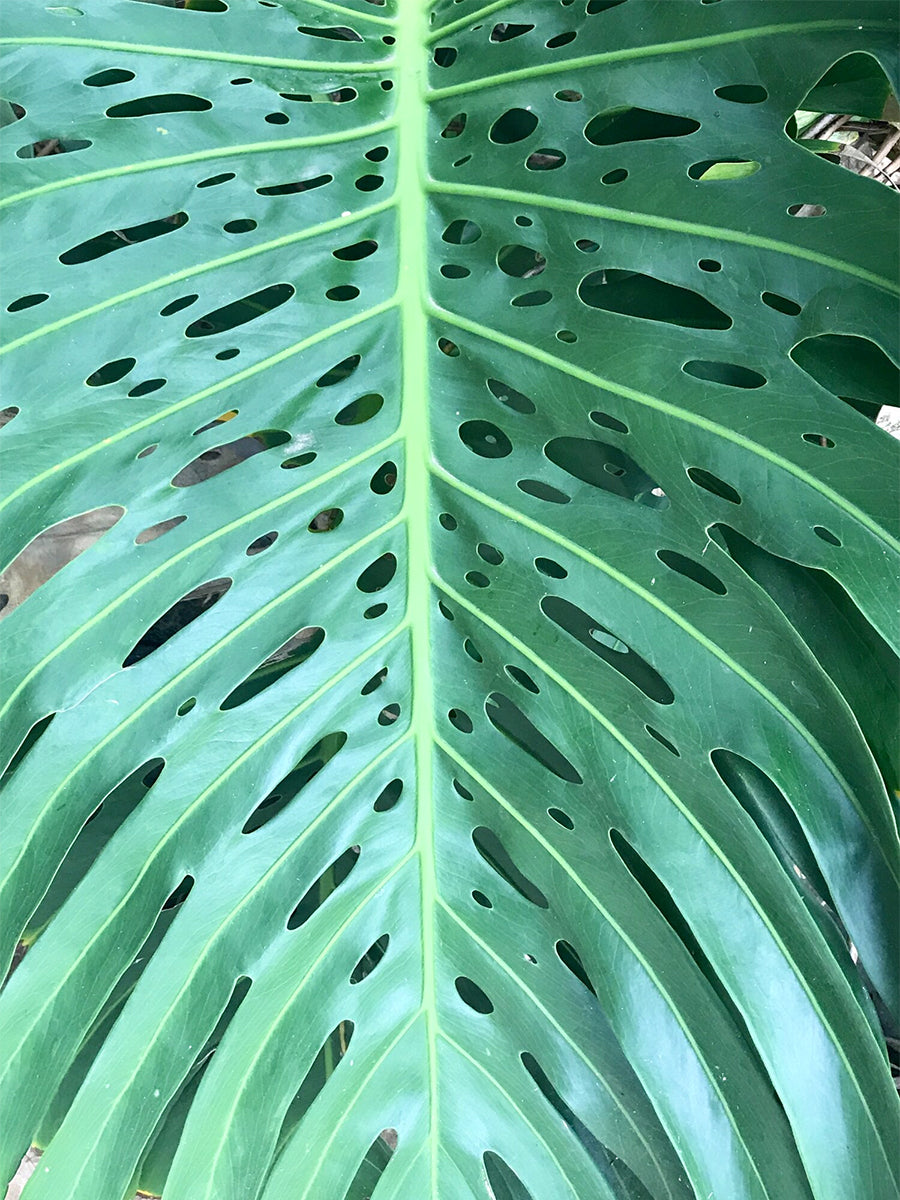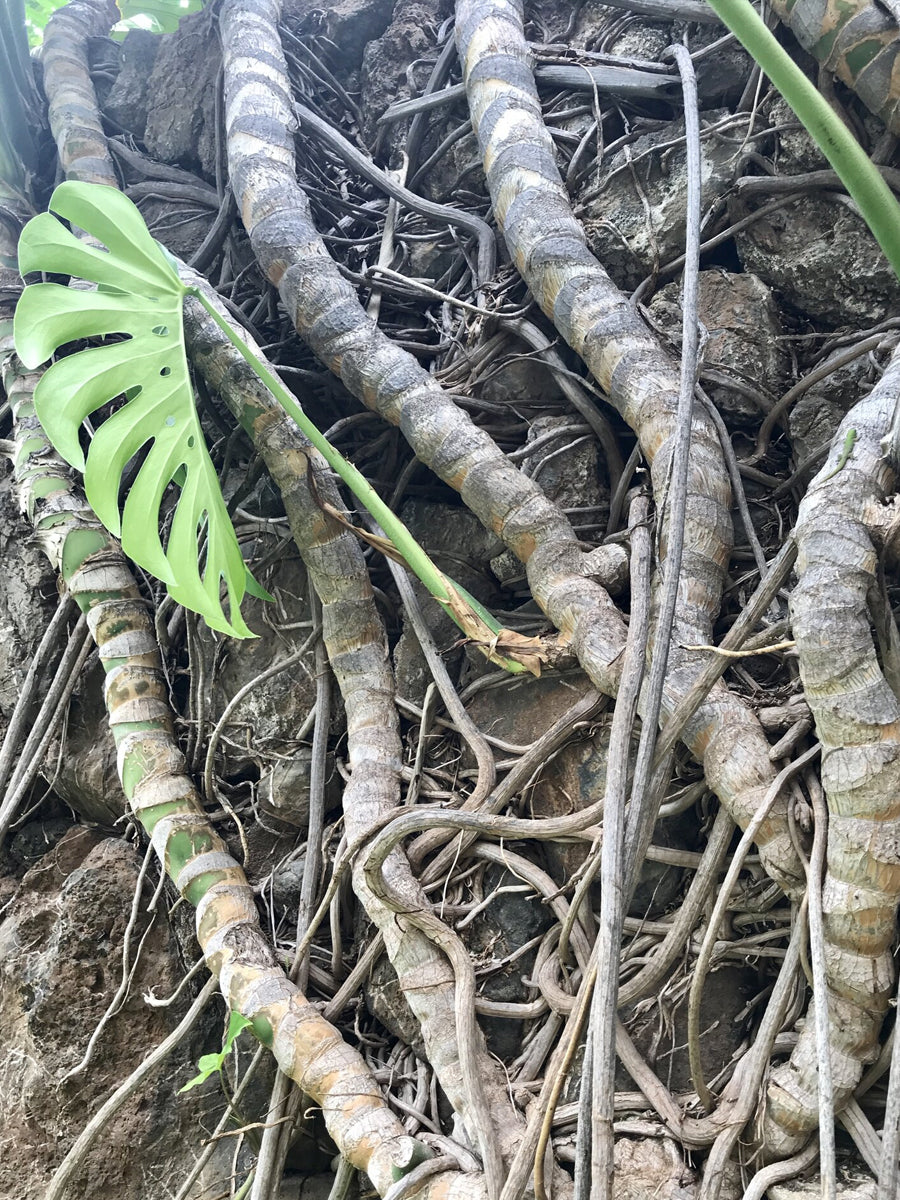
Monstera Deliciosa, so called for its gigantic leaves and delicious fruit, monstrum Latin for monster and the deliciosa part, you guessed it!
Native to Central America, this tropical giant is adored by the houseplant community for many reasons, but if I had to guess I’d say the most beloved feature of Monstera are those fantastic leaves with holes or ‘fenestrations'. In Italian finestra means window. And how very appropriate too, as fenestrations develop to allow light and air flow through, just like a window!
A question we receive often, “Why doesn’t my monstera have any splits or holes?
Am I doing something wrong?” The answer is quite often, no, unless you are keeping your plant away from a good light source-then the answer is YES! Give that baby some sun and preferably morning sun or very bright, indirect light for 6+ hours a day.
My usual first response is to ask how old is your Monstera? Young monstera do not split their leaves, they have no need yet. Instead, they are photosynthesizing with as much potential leaf surface area as possible to feed the rest of the plant so it can continue to grow large and strong to then produce bigger leaves with splits and fenestrations.
Once your monstera is a few years old, you will begin to notice the splits, then, after another year or so, you’ll have your first set of fenestrations. (a rewarding plant parent moment to discover that first unfurling leaf)!
Why do they begin to grow splits and holes? In their native habitat monstera climb up trees and lives under the canopy, waiting patiently for sunlight to stream through. If the larger, new leaf blocked all the sun from the smaller leaves, the plant wouldn’t photosynthesize as it climbs (generally, each new leaf grows slightly larger than the last). So the brilliant Monstera developed not only holes to let light pass through, but also to avoid getting ripped to pieces whenever a gust of wind or hurricane came through. If the fenestrations weren’t there, those massive leaves would act like a sail and be torn apart, and may even uproot those lovely roots from the tree!
Giant aerial roots hold on tightly as the plant makes its way up!
How about that “delicious” part?
Deliciosa refers to the fruit, which is a slightly complicated story. When eaten young, like pictured here, the fruit is so full of oxalic acid that eating it is toxic and very painful to your mouth and throat. To put it into perspective; oxalic acid is used to remove rust from metal. YUP!
Ok, so don’t eat it until ripe please!
However, when allowed to mature, to the point when the outer layer of the skin peels away at the touch of a finger, the fruit is rumored to be a delicacy, boasting a tropical flavor profile of pineapple, coconut and banana. The fruit is often made into jam or blended up with cream as a dessert—YUM! I have sadly not had the pleasure. Bucket list!
Monstera fruit, not quite edible yet!
Ok, so don’t eat it unripe please!
However, when allowed to mature, to the point when the outer layer of the skin peels away at the touch of a finger, the fruit is rumored to be a delicacy, boasting a tropical flavor profile of pineapple, coconut and banana. The fruit is often made into jam or blended up with cream as a dessert—YUM! Sadly, I have not had the pleasure. Bucket list!





